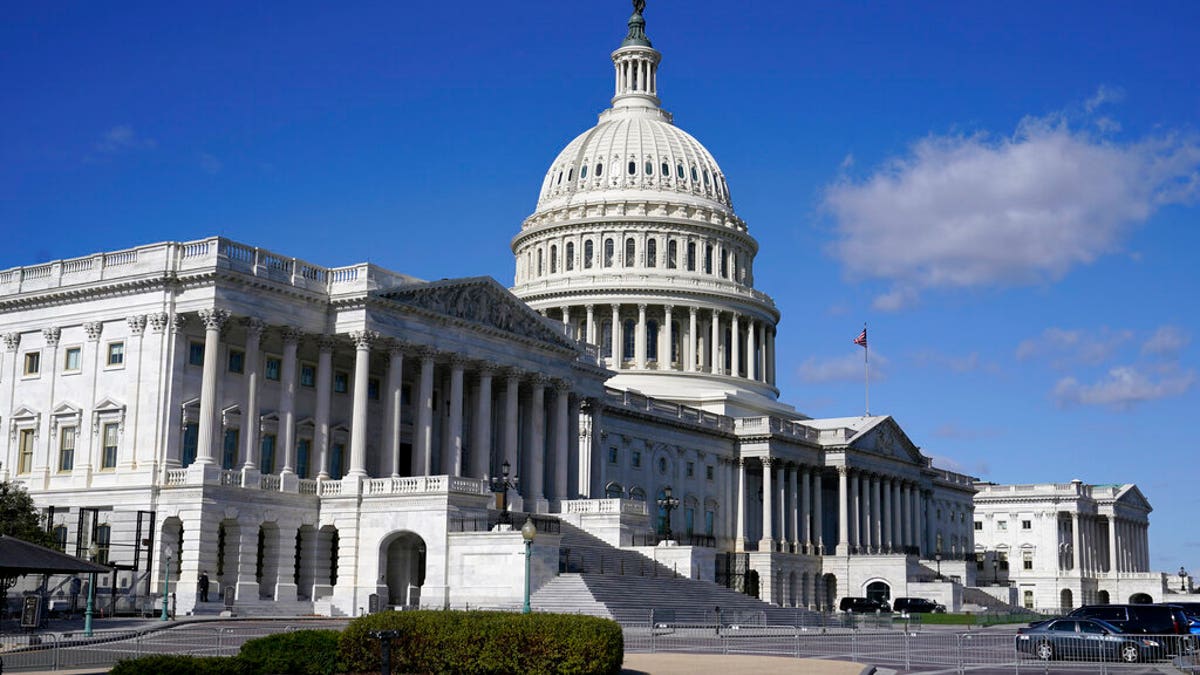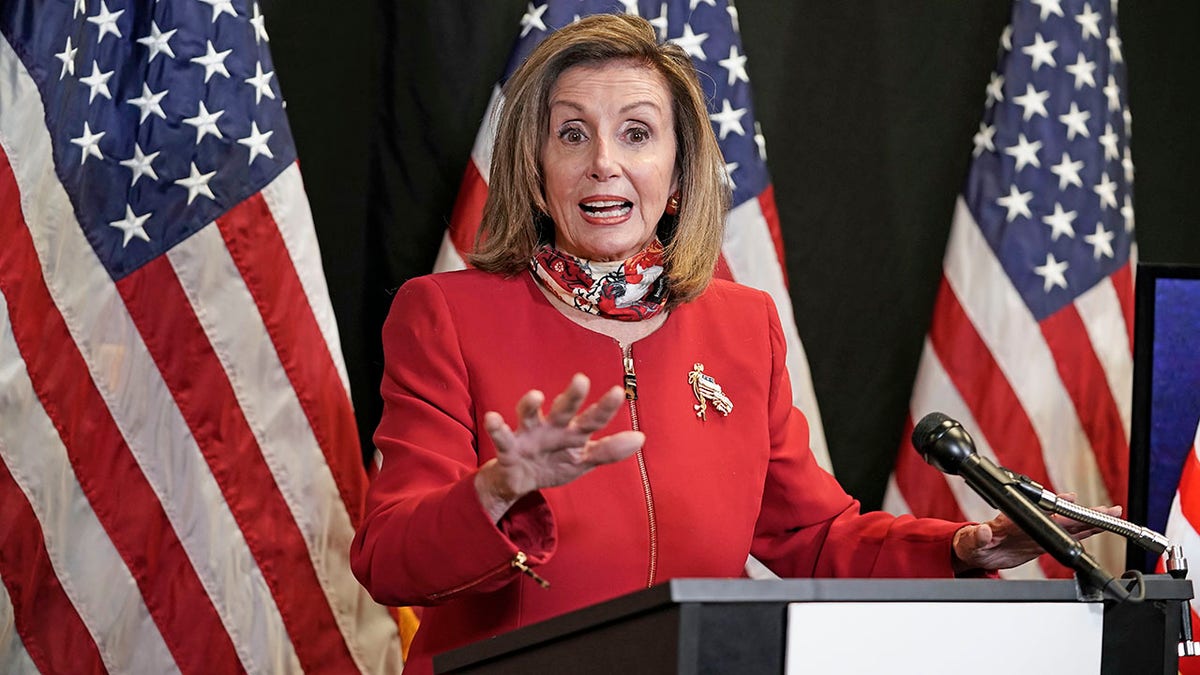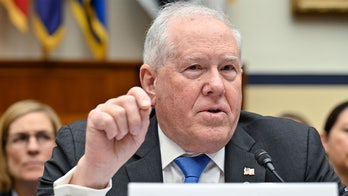Fox News Flash top headlines for December 1
Fox News Flash top headlines are here. Check out what's clicking on Foxnews.com.
Coronavirus altered most things in society. And constituting the House of Representatives to launch the 117th Congress in January is no different.
The pandemic could drastically impact how the House conducts opening day and swears in its members.
Under the Constitution, the new Congress is supposed to begin at noon on Jan. 3. But the 20th Amendment to the Constitution allows the preceding Congress to move the day if it makes a new law to do so.
For instance, Jan. 3 fell on a Saturday in 2015. So the 114th Congress didn’t start until Jan. 6, 2015, after Congress passed a law. Jan. 3, 2021, falls on a Sunday. But who knows what Congress will do. Even a recent memo from House Rules Committee Chairman Jim McGovern, D-Mass., to all House members of the 117th Congress declared that “when the exact date is finalized, Members will be notified.”

In this Nov. 2, 2020, file photo sunlight shines on the U.S. Capitol building on Capitol Hill in Washington. (AP Photo/Patrick Semansky, File)
Here’s one of several issues the House must resolve:
McGovern notes that Members “must be physically present” to be sworn-in.
That’s a problem.
The House implemented “remote voting” back in May due to the pandemic. Under the plan, members can essentially “phone in” their votes to a fellow member on the floor and cast a ballot by proxy. Members are only supposed to be absent if they are in a high-risk health category, have tested positive for coronavirus, are quarantined themselves or, are the caregiver for someone who could suffer health consequences if they contract COVID-19. Members voting in absentia are recorded the same as if they were present in the House chamber.
But, you can’t be sworn in to the House remotely.
Dozens of House Democrats haven’t darkened the door of the Capitol for months due to coronavirus concerns. But, they’ll have to show up to be sworn in next year.
There is precedent for swearing in members-elect elsewhere. But that requires the House to first approve a measure allowing members to be sworn in somewhere besides Capitol Hill.
In 1997, the late Reps. Julia Carson, D-Ind., and Frank Tejada, D-Texas, were sworn in by federal judges outside of Washington due to illnesses.
In January 1999, former Reps. George Miller, D-Calif., and Sam Farr, D-Calif., fell ill. Judges swore them in at their homes in California.
In January 2015, multiple members-elect missed opening day in the House to attend the funeral of late New York Gov. Mario Cuomo, a Democrat. The House swore in those members when they returned to Washington. But, their absences meant the House of Representatives didn’t start with a full complement of 435 members. Hold that thought. That will be important. We’ll come back to that in a moment.

Speaker of the House Nancy Pelosi, D-Calif., talks to reporters about Election Day results in races for the House of Representatives, at Democratic National Committee headquarters in Washington, Tuesday, Nov. 3, 2020. (AP Photo/J. Scott Applewhite, Pool)
In 2011, returning Rep.-elect Pete Sessions, R-Texas, and the late Rep. Mike Fitzpatrick, R-Penn., missed being sworn in en masse before the entire House, attending a reception in the Capitol Visitor’s Center. The duo raised their right hands as they watched the proceedings on television. But after finding out Sessions and Fitzpatrick weren’t sworn in properly, the House vitiated several roll call votes they took part in on the floor and formally swore them in a few days later.
So, it’s doubtful the House can start without having people there – even as the pandemic surges.
Moreover, the very first thing the House does to start the Congress is conduct a call to order by Clerk of the House Cheryl Johnson. The House must obtain a quorum in order to proceed. In other words, the House must have 218 of the 435 members present. And don’t forget that Democrats somehow need to have as many of their members present in order to secure a majority. We don’t know exactly how many Democrats the party will have in the House next year. But it’s going to be a narrow majority. Even more slim once Rep. Cedric Richmond, D-La., resigns to work for President-elect Joe Biden – and perhaps others.
The provisions for remote voting implemented earlier this year for the 116th Congress don’t automatically carry over into the 117th Congress. The full House must approve a new rules package to establish how the House will conduct business. That rules package will undoubtedly include a provision to re-establish remote voting for the duration of the pandemic. But they have to get everyone there first for these votes – despite health concerns.
This is not going to be easy.
Also, remember what we said about a full complement of House members being on hand? This is of paramount importance when it comes to election of the Speaker. The Speaker needs an outright majority of the entire House – not just the most votes (a plurality) to win. House Speaker Nancy Pelosi, D-Calif., lost 15 Democratic votes in January 2019 on the speaker vote. With a tight majority, Pelosi can’t endure defections anywhere close to that number come January.
But it may come down to how big the House actually is on opening day. Vis-à-vis, how many members-elect show up.
Former House Speaker John Boehner, R-Ohio, benefited from the House actually being smaller on opening day in January 2015 because so many members were absent due to Cuomo’s funeral. Only 408 members cast ballots for speaker that day. Thus, the magic number to win was 205. Boehner secured 216 votes. That’s not an outright majority of the entire House. 218 is. But the House wasn’t at full membership of 435 due to the absences. Twelve Republicans voted for Rep. Dan Webster, R-Fla.. as speaker. A smattering of other members commanded anywhere from three votes to a single vote.
So, could Pelosi benefit by members actually staying away? Doubtful. You can bet that every last Republican will be there – pandemic or no pandemic – if they think there’s a way to meddle with Pelosi returning to the speakership.
Most of the absences in 2015 for Cuomo’s funeral were Democrats. That helped Boehner because Democrats weren’t voting for him anyway. But Pelosi needs Democrats present to make sure she returns to the speaker’s suite.
And there could also be questions as to how big the House even is on opening day.
Iowa just certified Republican candidate Mariannette Miller-Meeks as the winner of an open House seat after defeating Democrat Rita Hart by six votes. Former Rep. Claudia Tenney, R-N.Y.. and Rep. Anthony Brindisi, D-N.Y. are separated by a few votes depending on who you talk to in a rematch of their 2018 tilt.
Article I, Section 5 of the Constitution declares that “each House shall be the Judge of the Elections, Returns and Qualifications of its own Members.”
In other words, there could be questions as to who the House actually seats – and, if it benefits one party or the other. The House could vote against seating individual members. And, what hangs in the balance is the vote for House Speaker.
CLICK HERE TO GET THE FOX NEWS APP
On Jan. 3, 1985, the House declined to seat Republican Richard McIntyre from Indiana, instead seating Rep. Frank McCloskey, D-Ind. The House also seated Reps. Loretta Sanchez, D-Calif., and Vern Buchanan, R-Fla., in in 1997 and 2007 respectively, “without prejudice,” despite pending electoral questions.
So, there is a lot to figure out.
Everything always hinges on the math on Capitol Hill. But this time, the math depends on who actually shows up and how the House manages that in the middle of a pandemic.






